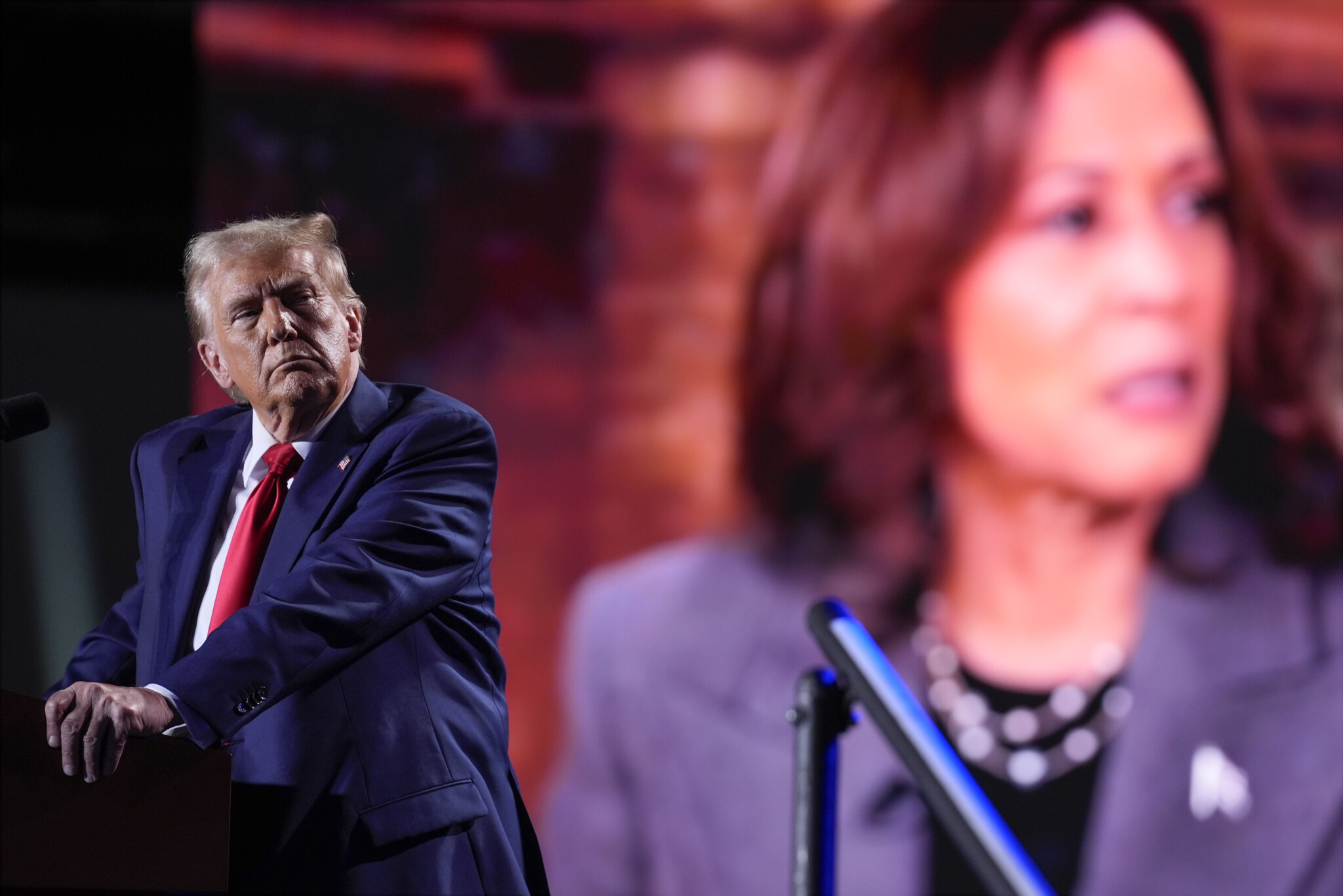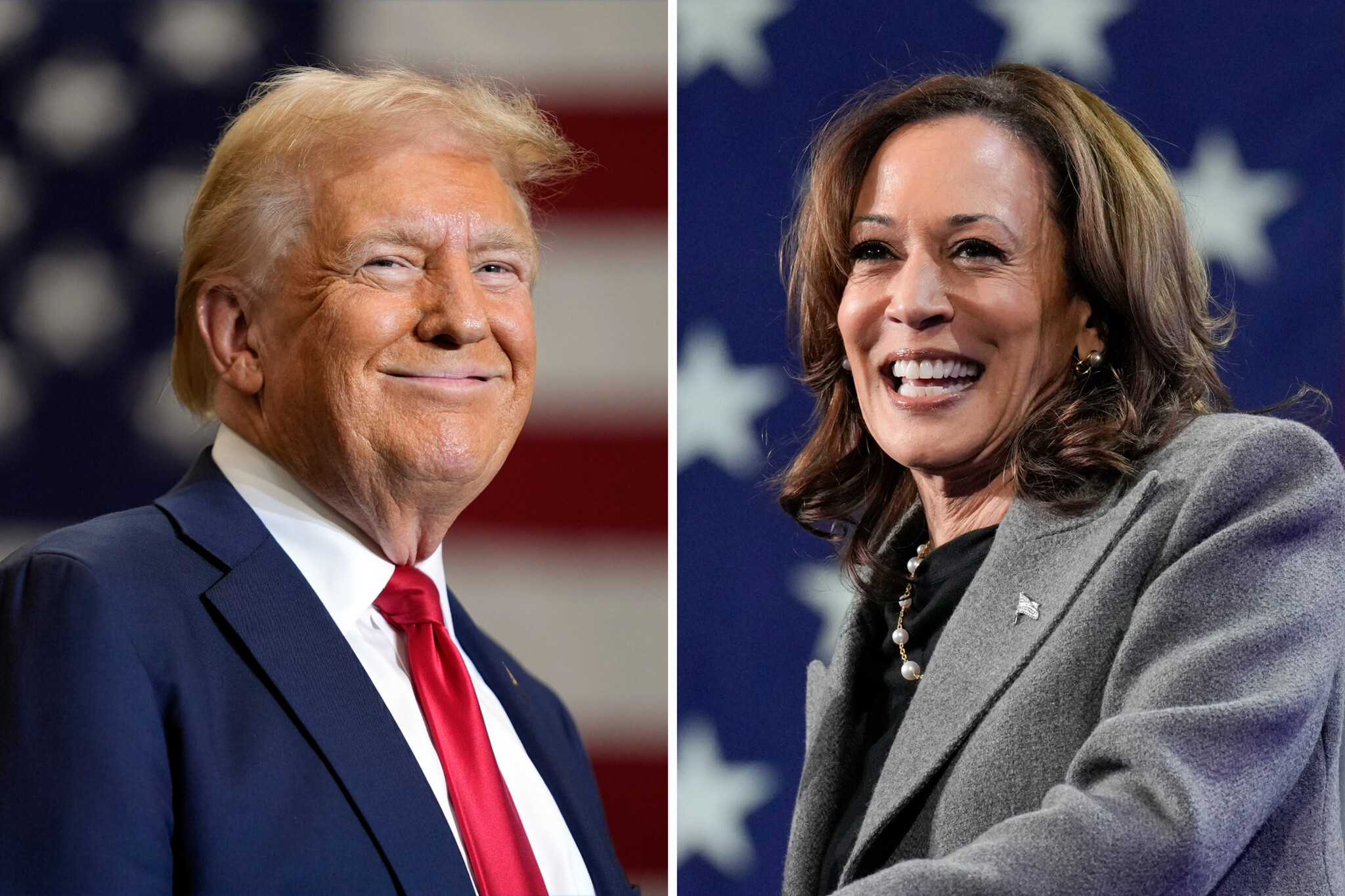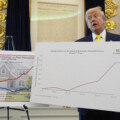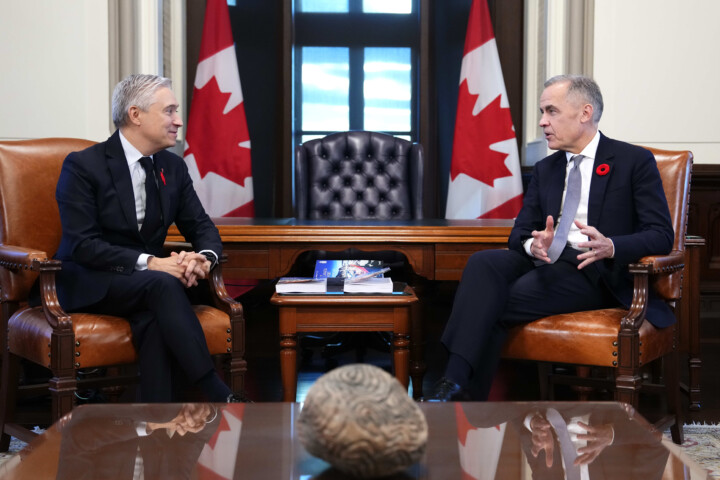A second Donald Trump administration would likely have a negative effect on Canada’s economy while a Kamala Harris presidency would yield marginal improvements with diminishing returns, says a new report from Oxford Economics.
Last month, the economic advisory firm released a report entitled “Assessing the impact of a Trump vs. Harris presidency,” as today Americans take to the presidential polls.
Economists Michael Davenport and Tony Stillo, who authored the report, place high odds on a divided White House and Congress as the anticipated outcome of the U.S. election, “which would likely mean a much less pronounced departure from our current baseline forecast,” Stillo told The Hub.
Oxford Economics’ baseline forecast, from which both election scenarios diverge, assumes the status quo: a Harris presidency, with the control of the House of Representatives and Senate divided between the parties.
To provide comprehensive estimates of the U.S. election’s economic impact upon Canada, the Oxford Economics authors nevertheless modelled “full-blown” outcomes: the winning president’s party taking full control of the U.S. Congress and fully implementing his or her promises.
“A Kamala Harris presidency wouldn't materially alter Canada's economic outlook, with or without Democrats taking full control of Congress,” said Stillo, Oxford Economics director of Canada economics.
Under Harris’s relatively open U.S. trade policy, bilateral trade between Canada and the U.S. would grow. Were Americans to elect Harris as president and give the Democrats control over Congress, several important factors of Canada’s economy—including consumption, non-residential investment, and prices for consumers and producers—would see no change.
The report estimates that a second Trump presidency and Republican-controlled Congress would produce worse outcomes for Canada.
“If…Trump fully implements his campaign pledges, it would result in weaker growth, higher inflation, and tighter monetary policy in Canada. This assumes the U.S. imposes sweeping tariffs on Canada, China, and other major U.S. trading partners along with retaliatory tariffs by Canada, China, and the other nations,” said Stillo.
Donald Trump’s plans
Trump’s proposed tax cuts, which he says are in support of U.S. business, would lower the federal corporate tax from 21 to 15 percent, according to Davenport and Stillo’s report. This would bring the U.S.’s corporate tax rate to the bottom third among OECD countries.
In addition, the report imagines Trump implementing 60 percent tariffs on Chinese goods and 10 percent on those from all major trading partners, including Canada. Trump has since implied a Canadian tariff as high as 20 percent. Canadian refined petroleum, cars, transport equipment, and metals industries would suffer the most as a result of these U.S. trade protections.
Retaliatory tariffs from Canada and others on U.S. goods, such as a 40 percent U.S. tariff imposed by China, could reignite the U.S.-China trade war, according to Oxford Economics’ report.
Oren Cass, chief economist of conservative economic think-tank American Compass, has argued that Trump’s proposed tariffs, one catalyst for Canada’s forecasted economic woes, are necessary for U.S. prosperity, levelling the playing field with China and boosting domestic production.
Donald Trump’s effect on Canada
As the U.S. comes out of a period of high inflation, the report warns that tax cuts and higher spending could boost demand and cause renewed inflationary pressures. This, along with the global trade skirmish increasing prices, would ultimately weaken U.S. demand and hit Canada’s economy hard.
The overall effect of Trump’s tax and trade policies would see Canadian GDP decline by 0.4 percent by 2027, and 0.9 percent by 2029.
Between 2027 and 2028, Canada’s non-fuel exports to the U.S. would fall by 1 percent, “the largest annual decrease since the Global Financial Crisis and the coronavirus pandemic,” reported Davenport and Stillo.
Between 2025 and 2027, retaliatory tariffs and a weaker Canadian dollar chasing fewer goods would raise Canada’s CPI from the mandated 2 percent target to 2.7 percent.
This would prompt the Bank of Canada to make interest rate hikes, which along with CPI inflation, would squeeze Canadians' disposable income. Sectors that rely on disposable spending would slow significantly, including accommodation, entertainment, and recreation.
Canada’s high inflation, tight monetary policy, global uncertainty, and reduced business and consumer confidence, the result of unhindered Trump-U.S. policies, would impact Canada’s construction sector the most, says the report. By 2029, its value of goods and services (gross value added) would fall 2.9 percent under the baseline scenario. Total non-residential (business) investment meanwhile would fall 9.1 percent. This, as the government of Canada plans to add new domestic investment costs, further imperiling Canadian investment.

Republican presidential nominee former President Donald Trump watches a video of Democratic presidential nominee Vice President Kamala Harris during a campaign event, Oct. 18, 2024 in Detroit. Evan Vucci/AP Photo.
Kamala Harris’ effect on Canada
As discussed above, a Harris administration is projected to provide marginal benefits for Canada’s economy.
The full implementation of Harris’ “Lower Costs for American Families” plan, and other social benefits policies involving childcare, health care, housing, and education, will require USD $2 trillion in additional taxes, according to Oxford Economics.
Higher social spending and a status-quo trade agenda could cause a light demand boost for Canadian exports. This, in turn, could boost Canadian business (“non-residential”) investment marginally until 2029.
“Canada would see a modest, temporary boost to GDP and inflation that would largely dissipate by 2029, which would not alter the path of Canadian monetary policy,” said Stillo.
Although Harris hasn’t promised Trump-style tariffs, she could enact some protectionist measures against Canada. This potentially includes increases to President Joe Biden’s lumber duties, or challenges to Canada’s Digital Services Tax under the United States-Mexico-Canada Agreement (USMCA), according to Oxford Economics.
“Protectionism and rising trade tensions with China will likely continue to gain momentum no matter who wins,” according to the report. The USMCA brought forward in 2020 by President Trump comes up for review in summer 2026.











